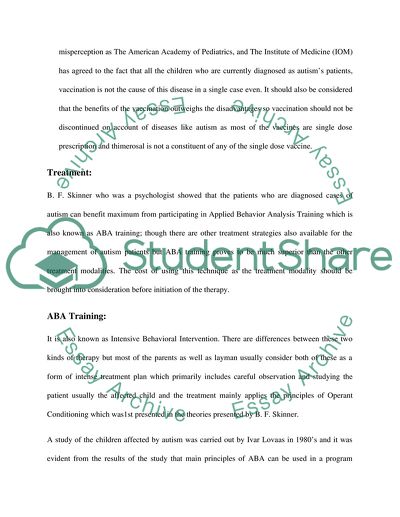Cite this document
(Diseases like Autism: Applied Behavior Analysis Training Research Paper - 1, n.d.)
Diseases like Autism: Applied Behavior Analysis Training Research Paper - 1. Retrieved from https://studentshare.org/health-sciences-medicine/1751910-treatment-of-autism
Diseases like Autism: Applied Behavior Analysis Training Research Paper - 1. Retrieved from https://studentshare.org/health-sciences-medicine/1751910-treatment-of-autism
(Diseases Like Autism: Applied Behavior Analysis Training Research Paper - 1)
Diseases Like Autism: Applied Behavior Analysis Training Research Paper - 1. https://studentshare.org/health-sciences-medicine/1751910-treatment-of-autism.
Diseases Like Autism: Applied Behavior Analysis Training Research Paper - 1. https://studentshare.org/health-sciences-medicine/1751910-treatment-of-autism.
“Diseases Like Autism: Applied Behavior Analysis Training Research Paper - 1”, n.d. https://studentshare.org/health-sciences-medicine/1751910-treatment-of-autism.


